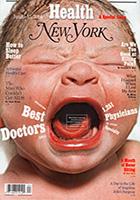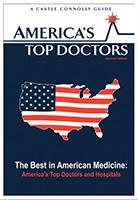The size and shape of your earlobes are extremely important to the aesthetic appearance of your ears. Regardless of gender or hairstyle, the earlobes are the portion of the ears that are most visible. Because of genetics, aging, or trauma due to previous piercings or accidents, you may have misshapen or unsightly earlobes. In most cases, repair of the earlobe is a simple surgical procedure under local anesthesia in the office setting.
The earlobe is the fleshy, lower part of your external ear or auricle that, unlike the upper 3/4 of the ear, contains no cartilage. Although obviously piercings can occur anywhere, the vast majority of women have piercings of the earlobes.

The size and shape of your earlobes are extremely important to the aesthetic appearance of your ears. Regardless of gender or hairstyle, the earlobes are the portion of the ears that are most visible. Because of genetics, aging, or trauma due to previous piercings or accidents, you may have misshapen or unsightly earlobes. In most cases, repair of the earlobe is a simple surgical procedure under local anesthesia in the office setting.
The earlobe is the fleshy, lower part of your external ear or auricle that, unlike the upper 3/4 of the ear, contains no cartilage. Although obviously piercings can occur anywhere, the vast majority of women have piercings of the earlobes.
Conditions that might need earlobe repair
Some of the conditions that commonly affect the earlobes that may require a surgical procedure are:
Stretched or torn piercing
Many people develop stretching or a complete tear of an ear-piercing. Repair is performed in the office under local anesthesia. Re-piercing is usually performed about 6-8 weeks later.
Keloids
In rare cases, some patients develop raised, unsightly scars on the earlobes from ear piercing. Keloids are most common in patients of African descent with dark skin, but can rarely occur in lighter skin types as well. The keloids can be removed but tend to recur. The best technique is usually to remove the keloid and then have the patient receive a low dose of radiation for 2-3 treatments and this usually prevents recurrence.
Congenital cleft earlobe
Some patients are born with a cleft in the earlobe, almost as if an earring had torn through the lobe. This condition can usually be repaired quite easily. If repair is performed at a very young age, then general anesthesia may be required.
Aging earlobes
Earlobes often become longer and deflated with age. Shortening of the elongated, droopy earlobes and/or inflation of the lobes with a small amount of the patient’s fat, can yield a much more youthful appearance. Other patients have distorted earlobes from previous facelift procedures. This can also be improved but may require a more major procedure.
What happens during the treatment?
The procedure to repair an earlobe is a type of otoplasty that can be performed on both children and adults. Depending on the condition of the patient, the surgery can take 20 minutes to an hour.
Dr. Thorne allows you to choose the type of sedation if any, you want. Local anesthesia without any sedation is probably the most common option. It is not only less expensive but also reduces the time spent in the office. Additionally, you won’t experience nausea and other symptoms associated with sedatives or anesthesia.
In rare cases, such as a bite wound or other trauma, the entire earlobe must be created. This usually requires two stages separated by several weeks.
Recovery after the surgery
Earlobe repair surgery does not require a long recovery. Fortunately, you can go back to your daily activities in just a day or two. Just remember that you should not rub or put pressure on your ears for a few weeks.
If you want to have your ears pierced again, remember to allow your ears to fully heal which could take 6-8 weeks.
Dr. Thorne has more than thirty years of experience and has performed otoplasty to treat every possible ear conditions. If you would like to talk to an expert on how to treat your ear condition, schedule an appointment online with us now.

Dr. Thorne is the Editor-in-Chief and the author of several chapters in Grabb and Smith's PLASTIC SURGERY, 7th Edition.
Ear Construction Chapter in PDF







